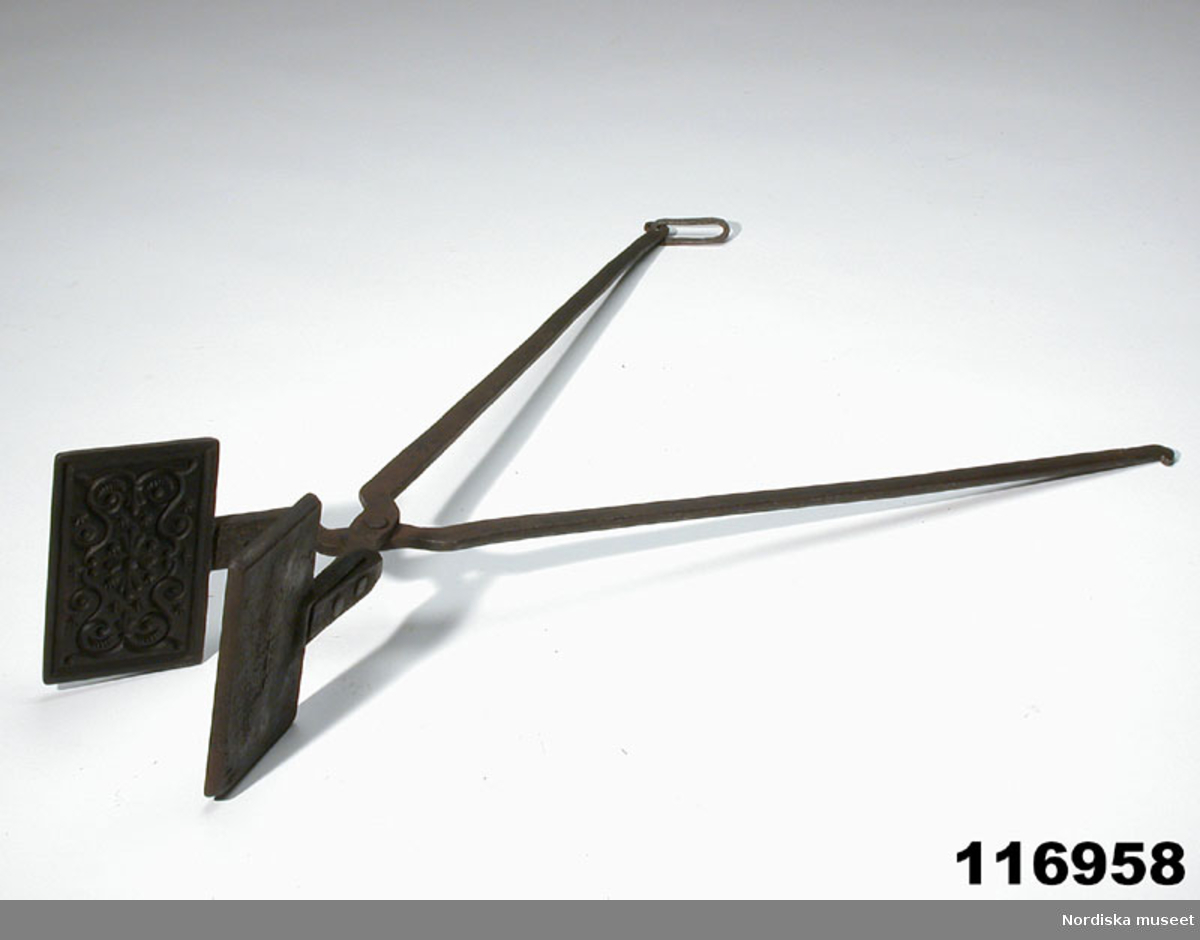Please, do read all the way through befor you begin - if there is a point where my description doesn't make sense to you you will not be as frustrated and have time to ask me or someone knowledgable in hose or sock making! What will you need:
paper (newspaper will work) and pen
Wool suitable for socks
Tailors chalk
ruler
pins
scissors
and preferably a second set of eyes and hands since it is harder to get a good fit on your own.
Start out on paper by making a sole - draw around your foot while standing:
Measure across your fot at the highest point and note the number somewhere
. Mark that corresponding line out as well on the paper. Measure around the back of the sole - the measuremant from those points - you can just make out that notation on my pattern. I also took the measurement from the toe to the point where the flap will bend - app. where foot becomes leg I guess.
You now have your sole pattern:
making the top:
Draw out the flap: Mine is almost square: 9 cm at the top and 8 cm at the bottom, which gives the pattern a slight angle but in reality the flap will end up square when hemmed.
Use the measurement
from the planned position of where the flap will end up on your leg to
the top of your toes - mark that point on the paper.
Use the second measurement from your highest point all around the heel and divide in half - add those as the "back flaps". I drew at right angles a 10 cm line on each side. That will probably work well for all adult feet.
Then raw
a rough likeness of the pattern I have adjusted to your measurements -
add a hefty seam allowance to make you able to adjust the fit as needed.
You now should have something looking like this:
This is how my new paper templates compares to my original pattern:
Now it is time to do it in wool fabric!
cut out and add remember to have seam allowance in the wool fabric. - you really will need have something to grab hold of when pinning.
Now the fun starts:
Pin
the back seam so you can comfortably get in and out of your sock but still
have it looking like you can have a reasonable fit:
Sew that
seam - I did this when I made the first pattern with looong stitches on the machine - but only because
it was loaded and ready - otherwise it is as quick to do a simple seam
by hand. Reason for basting is that pins hurt...and you will have enough
pins to worry about anyway!
Put on the top pattern,
place the sole piece on the floor, then place your foot on top of it and
and start pinning them together! (this is where you
either are an octopus or have an assistant)
Make sure that you pin close to the floor or you will end up with a seam higher up wich usually is not comfy at all! You also may have to adjust your back seam at this point. Just make sure you can remove the sock!
When
you think you have a good fit; carefully remove the sock.
You most likely will have quite a lot of excess fabric:

Trim the edges down to more sensible sewing allowances
:
 upside down
upside down
Sew along the sole. Double check that you have a good
fit. You can now trim the sewing allowances down to be ready for felling. I make the sewing allowance of the sole be a few mm longer so they will cover the tops when felled.
Now - sorry, but there is no other way - take the sock apart. Either keep this as your pattern - or make a paper one by drawing out a copy of your sock.
Make your socks! And remember if you make adjustments later - do that to your patterns as well!
As for my newly made pattern - which I kind of had to make since I realised that there was no way I could explain how to do this only in words - compare the new in purple to the old one in red:
Close enough I'd say!







































